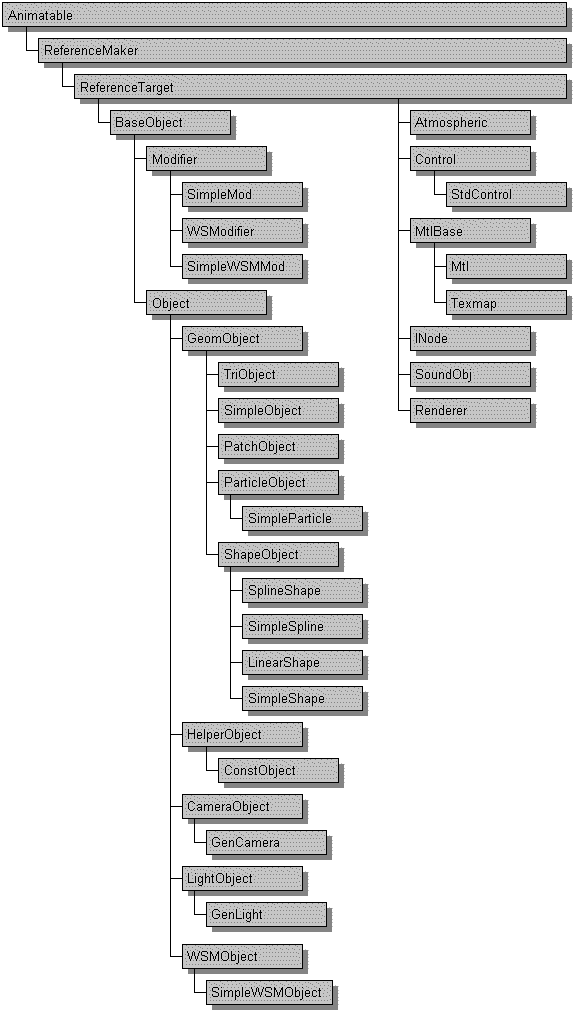Plug-In Architecture Overview
See Also: Overview of the Principal Classes
The SDK is a set of C++ classes and related routines. Writing a plug-in involves creating objects from the classes and implementing methods to allow communication between the plug-in and the system. In addition to using the provided SDK classes, you can integrate new classes seamlessly into the SDK framework.
Most of the SDK classes inherit from three = 4) BSPSPopupOnMouseOver(event);;">abstract base classes. The root class of these three is called Animatable. It defines most of the animation and track view-related methods. Derived from Animatable is ReferenceMaker. This class allows you to make references to other objects. Derived from ReferenceMaker is ReferenceTarget. A reference is a two-way link between objects in the scene. It creates an official record of the dependencies between the ReferenceMaker and the ReferenceTarget. Its primary function is to allow a reference target to inform its dependent reference maker that it has changed in some way.
Classes that don't inherit from Animatable are primarily those that don't deal with animation. For example, the Interface class provides a mechanism for plug-ins to call functions in 3ds max itself. The Interface class is not derived from Animatable.
The following diagram shows the inheritance tree of the principal public classes in the SDK. The base classes (classes that do not have parents) are shown at the top, and the inheritance hierarchy proceeds toward the bottom and to the right.
